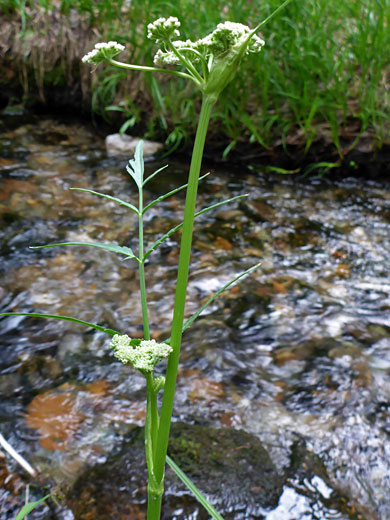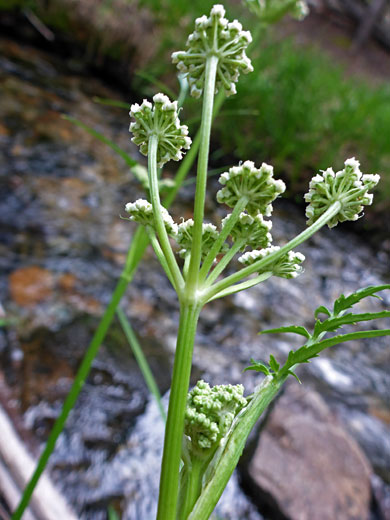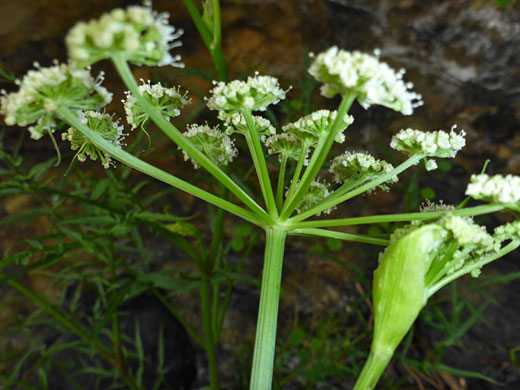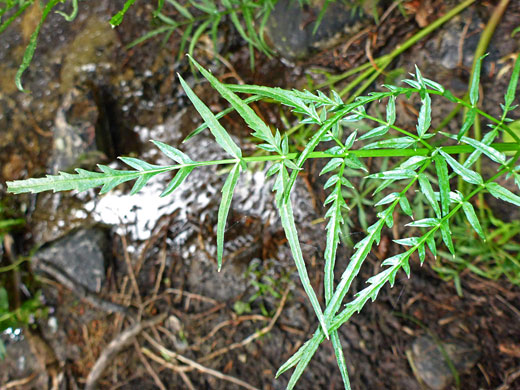Common name:
King's angelica
Family:
Scientific name:
Angelica kingii
Main flower color:
Range:
Nevada, and small adjoining areas of California, Idaho and Utah
Height:
Up to 6 feet
Habitat:
Streambanks in mountainous regions, between 7,000 and 10,500 feet
Leaves:
Oblong in outline, up to 16 inches long, with entire or sparsely-toothed leaflets
Season:
June to August
Angelica kingii is found in a fairly specific habitat of wooded streambanks in the subalpine zone, in scattered mountainous regions of the Great Basin, mainly in Nevada, and the White Mountains of California.
Basal leaves are pinnately divided into closely-spaced lance-shaped leaflets, regular in shape, while upper stem leaves are divided into fewer, narrower leaflets, more widely-spaced. Leaf bases are enclosed by sheaths.
There are no bracts at the base of the inflorescence. Rays, numbering between 7 and 14, are unequal in length, angled above the plane, and terminate in tight, non-overlapping clusters of tiny white flowers. Pedicels and rays have webbed bases.
Basal leaves are pinnately divided into closely-spaced lance-shaped leaflets, regular in shape, while upper stem leaves are divided into fewer, narrower leaflets, more widely-spaced. Leaf bases are enclosed by sheaths.
There are no bracts at the base of the inflorescence. Rays, numbering between 7 and 14, are unequal in length, angled above the plane, and terminate in tight, non-overlapping clusters of tiny white flowers. Pedicels and rays have webbed bases.
All Contents © Copyright The American Southwest | Comments and Questions | Contribute | Site Map







